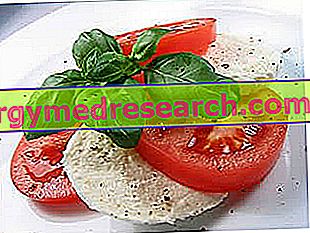What's this?
Asphyxiated skin is a complication of mixed or oily skin, which results in a greasy, but at the same time, dry appearance. In addition, imperfections can appear such as large pores, blackheads and pimples, which alter the uniformity of the skin relief and the brightness of the skin.

The management of asphyxiated skin requires daily hygiene practices and targeted dermocosmetic treatments, which can mitigate existing imperfections and prevent this type of problem.
Note. It should be noted that the asphyxiated skin does not fall within the classifications of conventional types of skin and does not properly represent a dermatosis. This manifestation is to be considered rather as an anomalous reaction to a state of skin suffering, which can be induced by multiple factors.
General characteristics
As the name suggests, the "non-breathing" skin is called "asphyxiated". From the histological and aesthetic point of view, this problem presents itself as a complication of mixed or oily skin .
The asphyxiated skin appears dull, dull and greyish in color. Despite being dehydrated on the surface, the skin has impurities that make it oily and uneven, due to a denser sebum, mixed with flaking corneal cells that hinder normal skin transpiration.
The asphyxiated skin also presents a thickening of the stratum corneum and hypersecretion of the sebaceous glands of the ceroid type. This predisposes to the appearance of skin imperfections, such as comedones (blackheads), boils (white spots) and microcysts (small collections of sebum and keratin, of the maximum size of a pinhead). There are also large pores, especially on the forehead, cheeks and nose.
Typical signs of asphyxiated skin:
- Dry and greasy skin surface;
- Dull, greyish or yellowish coloring;
- Sensation of skin that "pulls" after cleansing;
- Presence of skin imperfections, such as large pores, pimples, blackheads and microcysts.
Main causes
Asphyxiated skin is a complication of mixed or oily skin, which can be manifested by the intervention of multiple factors.
One of the main causes of this problem can be found in the use of unsuitable cosmetics (eg moisturizers or nutrients with a rich formulation and too aggressive soaps), which prevent the skin from "breathing" properly. When using these products, mixed or oily skin can react abnormally, dehydrating and flaking on the surface, while excess impurities collect in the pores.
In fact, mixed or oily skin produces an already sufficient quantity of sebum, so if the application of these too oily cosmetics lasts over time, the skin undergoes a real "asphyxia".
Asphyxiated skin is particularly common during adolescence, especially in women. During this period, in fact, the body is subjected to numerous significant changes that influence this problem.
Asphyxiated skin can also be associated with disorders of the gastrointestinal system, such as poor digestion, malabsorption, constipation and diarrhea. Finally, a poor intake of nutrients, vitamins and minerals can further aggravate the conditions of a skin that tends to be asphyxiated.
Hygiene, cosmetics and treatments
In the hygiene and cosmetic care of asphyxiated skin, it is necessary to rebalance the skin, thus stabilizing the new condition.
For facial cleansing, it is necessary to use daily non-aggressive detergents, preferably skin-compatible, which remove impurities and make-up residues, removing only the part of superficial sebum. These products should be gently massaged, then rinsed thoroughly to leave no residue.
For the hygiene of asphyxiated skin it is possible, as an alternative, to use a cleansing milk, which eliminates the oiliness of the skin by acting by affinity, to which the application of a tonic based on astringent, soothing and balancing botanical extracts can follow. the skin biofilm.
Once a week, moreover, it is advisable to use an exfoliant with smoothing microgranules, to purify the asphyxial skin in a deep way and gently remove sebum and keratin residues that clog the pores. As far as hydration is concerned, the skin must be treated with rebalancing cosmetics, absolutely free of fat, preferably without silicones or paraffins.
To these hygienic practices, we can add the intervention of the dermatologist, who can recommend, depending on the case, the use of exfoliation peelings and some targeted treatments to be used at home, such as those based on salicylic acid and lipohydroxy acids (LHA ), with a superficial and purifying micro-exfoliating action. These active ingredients are also useful for reducing the visible results of previous imperfections.
Finally, it is important to correct the incorrect eating habits that can favor the problem. Therefore, it is necessary to adopt a varied and balanced diet, devoid of particularly fatty foods. Among the foods that should not be missing include vegetables and fresh fruit, fish, rice and other cereals, useful for restoring the B vitamins and Omega 3-6-9, of which those suffering from asphyxiated skin is often lacking. In addition to these measures, if it is necessary to ensure a good supply of vitamins and polyunsaturated fatty acids, the use of specific dietary supplements may also be indicated (see also: Diet and Acne).



